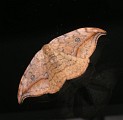
Русские, остановите эту войну! Спасите Свободную Украину!
Russians, stop this war! Save Free Ukraine!
Biodiversity Map
Taxa

Drepana — subordinate taxa:
Taxon count: 2
-
Arthropodaphylum
Click to switch
to select orders
and filters > -
Hexapodasubphylum
Click to switch
to select orders
and filters > -
Insectaclass
Click to switch
to select orders
and filters > -
Lepidopteraorder
Click to set
as the main taxon
and as a base
← of the left panel > -
Drepanoideasuperfamily
Click to set
as the main taxon
and as a base
← of the left panel > -
Drepanidaefamily
Click to set
as the main taxon
and as a base
← of the left panel > -
Drepaninaesubfamily
Click to set
as the main taxon
and as a base
← of the left panel > -
Drepanagenus
Click to set
as the main taxon
and as a base
← of the left panel >
PL
YES
name status: valid name
BioMap ID: 1203668
taxon code: 2234
taxonomy checked: YES
Data on distribution in Poland

Statistics
- Records: 24
- Publications: 1
- Collections: 9
- Publication authors: 2
- Illustrations (iconography): lacking
- Photos (specimen/observation): 11
Taxon description
Gatunek dość pospolity, występujący w lasach mieszanych, zagajnikach i parkach w dwu pokoleniach: w V i VI oraz VII i VIII. Gąsienice, żywiące się liśćmi brzóz i olch, spotykane przede wszystkim na niskich drzewkach, przebywają na wierzchniej stronie liści, zasnutej przędzą dla łatwiejszej przyczepności. Liście, na których żerują gąsienice, są najczęściej lekko zwinięte i sczepione w niedomkniętą rurkę. W podobny sposób zachowują się również gąsienice innych gatunków wycinek. Pierwsze pokolenie gąsienic sierpianki żeruje w VI, drugie, liczniejsze, od VIII do X. Gąsienice budują oprzędy w zespolonych przędzą liściach, w których zimują w drugim pokoleniu jako poczwarki.
[113: Platypteryx falcataria (Linnaeus 1758) – wycinka sierpianka]
[113: Platypteryx falcataria (Linnaeus 1758) – wycinka sierpianka]
Selected photos
... browse
 Drepana
Drepanafalcataria
 Drepana
Drepanafalcataria
 Drepana
Drepanafalcataria
 Drepana
Drepanafalcataria
 Drepana
Drepanafalcataria
 Drepana
Drepanafalcataria
 Drepana
Drepanafalcataria
 Drepana
Drepanafalcataria
External data sources
- Ostatnie rekordy
-
1032012
 ⊡
⊡ Drepanidae: Drepana falcataria, PL, Pojezierze Mazurskie, warmińsko-mazurskie, Olsztyn, Olsztynek, Maróz, UTM DE52, 2015, leg. S. Pietrzyk
Drepanidae: Drepana falcataria, PL, Pojezierze Mazurskie, warmińsko-mazurskie, Olsztyn, Olsztynek, Maróz, UTM DE52, 2015, leg. S. Pietrzyk -
1032011
 ⊡
⊡ Drepanidae: Drepana falcataria, PL, Pojezierze Mazurskie, warmińsko-mazurskie, Olsztyn, Olsztynek, Maróz, UTM DE52, 2014, leg. S. Pietrzyk
Drepanidae: Drepana falcataria, PL, Pojezierze Mazurskie, warmińsko-mazurskie, Olsztyn, Olsztynek, Maróz, UTM DE52, 2014, leg. S. Pietrzyk -
1028129
 ×
× Drepanidae: Drepana falcataria (Heintze 1990)
Drepanidae: Drepana falcataria (Heintze 1990) -
896399
 ×
× Drepanidae: Drepana falcataria, PL (Razowski et Wiąckowski 2000(1999))
Drepanidae: Drepana falcataria, PL (Razowski et Wiąckowski 2000(1999)) -
846843
 ⊡
⊡ Drepanidae: Drepana falcataria, PL, Beskid Zachodni, Puszcza Niepołomicka, małopolskie, Bochnia, UTM DA53, 2001
Drepanidae: Drepana falcataria, PL, Beskid Zachodni, Puszcza Niepołomicka, małopolskie, Bochnia, UTM DA53, 2001 -
846307
 ⊡
⊡ Drepanidae: Drepana falcataria, PL, Nizina Mazowiecka, łódzkie, Raducz, UTM DC54, 2001, leg. G. Banasiak
Drepanidae: Drepana falcataria, PL, Nizina Mazowiecka, łódzkie, Raducz, UTM DC54, 2001, leg. G. Banasiak -
845453
 ⊡
⊡ Drepanidae: Drepana falcataria, PL, Dolny Śląsk, opolskie, Lędziny, UTM BB81, 2002, leg. T. Blaik
Drepanidae: Drepana falcataria, PL, Dolny Śląsk, opolskie, Lędziny, UTM BB81, 2002, leg. T. Blaik -
844621
 ×
× Drepanidae: Drepana falcataria, PL, Puszcza Borecka, warmińsko-mazurskie, UTM EE79, 1994, leg. J. Buszko
Drepanidae: Drepana falcataria, PL, Puszcza Borecka, warmińsko-mazurskie, UTM EE79, 1994, leg. J. Buszko -
843678
 ⊡
⊡ Drepanidae: Drepana falcataria, PL, Pojezierze Pomorskie, pomorskie, Funka, UTM XV66, 2001, leg. J. Buszko
Drepanidae: Drepana falcataria, PL, Pojezierze Pomorskie, pomorskie, Funka, UTM XV66, 2001, leg. J. Buszko -
843445
 ⊡
⊡ Drepanidae: Drepana falcataria, PL, Nizina Sandomierska, podkarpackie, Podemszczyzna, UTM FA66, 2004, leg. J. Buszko
Drepanidae: Drepana falcataria, PL, Nizina Sandomierska, podkarpackie, Podemszczyzna, UTM FA66, 2004, leg. J. Buszko - ... more
- Powiązane publikacje
-
Razowski J., Wiąckowski S.K. 2000(1999). Przyczynek do znajomości męczelkowatych (Hymenoptera: Braconidae), parazytoidów motyli (Lepidoptera). Wiad. Entomol., 18(4):247-250.
 full text
full text Show records
Show records -
Heintze J. 1990. Motyle Polski (wydanie drugie uzupełnione). Wydawnictwa Szkolne i Pedagogiczne, Warszawa. 302 pp.
 Show records
Show records
- Powiązane zbiory
-
Banasiak G.
 Show records
Show records -
Blaik T.
 Show records
Show records -
Fuglewicz E. et S.
 Show records
Show records -
Larysz A.
 Show records
Show records -
Malkiewicz A.
 Show records
Show records - ... more
- Powiązani autorzy
-
Heintze J.
 Show records
Show records -
Razowski J.
 Show records
Show records -
Wiąckowski S.K.
 Show records
Show records





